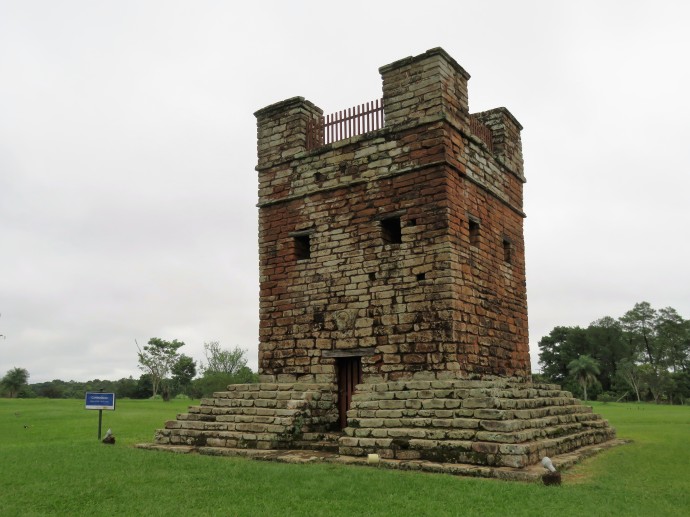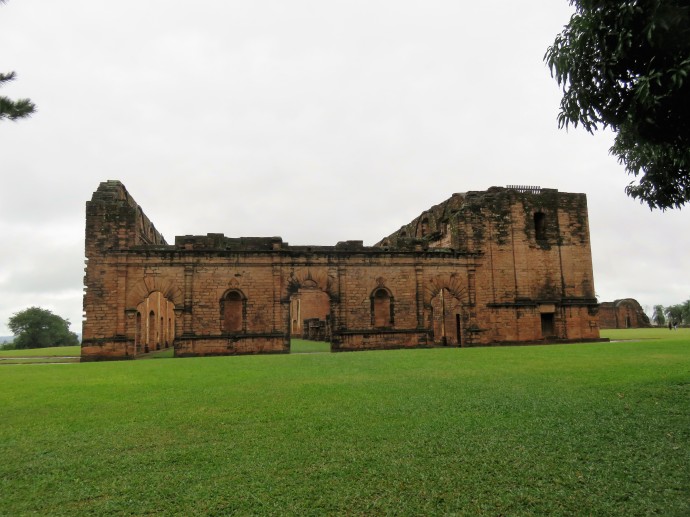I am prepared to be put in awe and be amazed as I travel this route in Paraguay. I expect similar reactions as when I traveled the Chiquitos in Bolivia and Chiloe Island in Chile. Follow me as I travel from city to city to see these sights in Paraguay.
San Ignacio Guasu was the first of the thirty mission villages founded by the Jesuits in the 17th and 18th centuries in southern Paraguay, northern Argentina, southern Brazil and Uruguay.
When installing a mission, missionaries first built the church, next to it there was the Coty Guazu or House of the Older Men, the school and the town hall, workshops, store and dairy.
Opposite to the church, they used to leave a space for the plaza. The dwellings of the Natives stood in front of the plaza. The Natives were given parcels of land and they were taught how to cultivate it and to manage livestock.
The ratio of Natives to missionaries was typically three missionaries to three or four thousand natives.
The economic and political growth of the missions aroused the animosity of the rulers of the time and generated successive attempts to submit them to the will of the Spanish authorities. Finally, the Jesuits were expelled from America by the king of Spain in 1767.
The following is a direct quote of the Paraguay Secretaria Nacional de Tourism:
Paraguay’s Jesuit Route is equivalent to a tour that covers San Ignacio Guazu, Santa Maria de Fe, Santa Rosa, San Cosme y San Damian, Santísima Trinidad del Paraná and Jesus de Tavarangue. In all these cities are conserved enough samples of what it was that period of 150 years of presence of the missionaries of the Society of Jesus in Paraguay
During all that time dedicated to the evangelization of the native population of Paraguay, they developed know-how that achieved depth as the music, the architecture, the sculpture, the painting, the graphic arts and other sciences.
In San Ignacio Guazu, the Diocesan Museum conserves the most finished sample of the baroque art, the images carved in wood by the Indians, the employment of the colors and the perfection of their forms and proportions reveal the dimension of the task of teaching and the high degree of assimilation of the Indians catechized.
Santa Rosa preserve part of the Jesuitical constructions as the bell tower that up to now serves to call to the faithful, the coty guasu or Indian house that covers all the block, Virgin of Loreto chapel where are conserved frescos and images of great beauty and value
Santa Maria de Fe is also a depository of some of the great legacy of the Jesuits. The museum is housed in what was originally Indian home guards sacred wood art carved by the Indians and other objects of worship
Complete the missionary circuit the city of Santiago, whose church is the only complete altarpiece of the Jesuit time. What was Indian house also became a museum where you can see a rich variety of sculptures
The Department of Itapúa gave seat to Santísima Trinidad del Paraná where can be observed what was the architectural assembly there erected. Today, the installation of a system of lights, sound and images for nocturnal visits permits to amuse the life that shared Indians and missionaries in that reduction
Very close to Trinidad is Jesus de Tavarangue whose urban structure consists of the temple, which was left incomplete, the Plaza Mayor, the College attached to the church, the houses of protection for orphans and widows called Coty Guazú or Casa Grande
San Cosme y San Damian is another jewel left to Paraguay by the Jesuit missions. This reduction more than just fulfill the mission of catechesis was a science center specialized in astronomical observation and interpretation. It was recently performed the restoration of this complex that is currently designated “Astronomical Interpretation Center Buenaventura Suárez” in tribute to its creator and director.






















































































 The bell tower was a massive structure and integrated into the construction of the church.
The bell tower was a massive structure and integrated into the construction of the church.
















You must be logged in to post a comment.